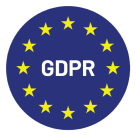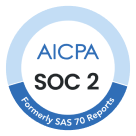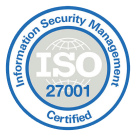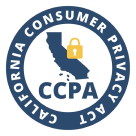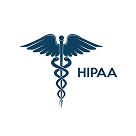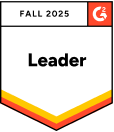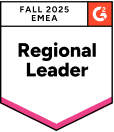
Did you know that U.S. businesses risk losing $856 billion annually due to poor customer service?1 This alone is why call center benchmarking matters.
Today we’ll help you optimize all of your call center’s operations to maximize customer satisfaction, employee productivity, revenue generation, and more.
Discover 10 key call center metrics to track, call center industry standards to follow, and best practices to implement.
Key Takeaways:
- Call center benchmarking enhances performance insights, drives optimization, supports goal-setting, and ensures better decision-making.
- You can apply competitive benchmarking to outpace market rivals, or performance benchmarking to maintain a strong industry position.
- Choose the right call center KPIs, track call center industry benchmarks, and set clear, realistic goals to guide your strategy.
Benchmark smarter, fix gaps faster, and stop letting bad service bleed your revenue.
What Is Call Center Benchmarking?
Call center benchmarking means strategically tracking your internal performance metrics and comparing them to industry standards, competitors, or top-performing contact centers.
This form of contact center benchmarking can be applied across every aspect of your operation: from call handling to customer satisfaction to cost per call. It helps teams identify where they’re excelling, where they’re falling short, and what they need to optimize next.
In other words, benchmarking isn’t just about comparison: it’s about continuous improvement and optimization through measurable, actionable insights.
Start benchmarking like a boss today. The first 14 days are on us. No CC needed.
Why Is Call Center Benchmarking Important?
While it’s hard to capture the full impact of call center benchmarking in a single metric, its value is clear in how it improves visibility, efficiency, and strategic focus.
Here’s why benchmarking matters:
- Clear operational baselines
Benchmarking creates a stable reference point to measure performance accurately and track progress over time.
- Targeted Efficiency Gains
Benchmarking shows exactly where you’re losing time or money, including key call center metrics such as resolution speed, wait time, and agent status (idle/occupied).
- KPI Context That Matters
Benchmarking gives your metrics meaning by comparing them to relevant call center KPI benchmarks by industry.
- Data-Driven Decision-Making
It turns performance data into clear next steps, helping you prioritize changes that drive results. G2 predicts the digital experience platform (DXP) market will grow at nearly 12% CAGR² (compound annual growth rate) through 2030. This shows why call center analytics and benchmarking are now must-have investments.
- Higher Operational Efficiency
By aligning your processes with industry standard call center metrics, you improve process performance and reduce your call center cost per call.
- Customer Experience Improvements
Benchmarking exposes the service issues customers notice most—like slow answers or poor handoffs—so you can remove friction.
- Stronger Competitive Advantage
It helps your contact center benchmarking efforts stay focused on what actually moves the needle in a crowded market.
Types of Call Center Benchmarking
Call center benchmarking encompasses two main types: competitive and process benchmarking. Understanding these will help your business outpace competitors or refine internal processes.
1. Competitive Benchmarking
Focuses on a single target (i.e., direct competitor), seeking to match, or ideally outperform it in a given aspect.
Benefits:
- Improving problematic business areas
- Strengthening competitive viability
- Winning deals
- Growing market share
Use Case:
Imagine you receive negative feedback regarding your customer service from a customer who leaves for a competitor. After analyzing both your and the other company’s review profiles, you find a recurring theme.
You benchmark customer-facing metrics, like wait times, first call resolution, and satisfaction, against theirs. Based on the results, you set new call center KPIs (Key Performance Indicators), launch targeted training, and optimize call flows to regain lost ground.
2. Process Benchmarking
Focuses on overall call center operations, identifying areas for improvement by measuring current statistics and comparing them against call center industry benchmarks and contact center industry standards.
Benefits:
- In-depth insights into current performance
- Actionable optimization opportunities
- Maintained market position
Use Case:
Imagine you implement a call center benchmarking tool like Call Center Analytics. Over time, you discover outbound conversions trail behind industry-standard call center metrics, while inbound leads exceed expectations.
This suggests reallocating resources from inbound to outbound, investing in tools like Power Dialer (faster, more efficient outreach), adjusting cold calling scripts, and improving agent training.The result: better balance, optimized resource use, and improved call center KPI benchmark performance.
Pro Tip
Pro Tip: Call center benchmarking isn’t just about where you stand. A call center benchmarking report helps you track progress over time and see how quickly your team improves.
10 Essential Call Center Metrics for Benchmarking
Call center tracking metrics are foundational to benchmarking and operational improvements.
While metrics can vary based on goals (e.g., improving first call resolution or lowering call abandonment rate), these 10 should be on every team’s radar:
1. Conversion Rate: The percentage of outbound calls that result in a desired outcome, such as a sale, appointment booking, or lead generation. It measures the effectiveness of outbound sales efforts in converting prospects into customers or qualified leads as tracked in call center benchmarks.
Global Benchmark: 2.5%
2. Average Call Duration: The average length of time spent on outbound sales calls. This metric provides insights into the efficiency of sales conversations and helps identify opportunities to streamline interactions, based on call centre metrics industry standards.
Global Benchmark: ~5 minutes
3. Lead Response Time: The time elapsed between receiving a lead and making the first outbound sales call. Rapid response times are crucial for engaging prospects while their interest is high and increasing the likelihood of conversion, making it a vital call center KPI benchmark.
Global Benchmark: Industry-specific
- Healthcare: ~2 h 5 min
- Telecommunications: ~16 min
- Small Business: ~48 min
- Mid-Size Business: ~1 h 38 min
- Enterprise: ~1 h 28 min
4. Dialing Efficiency: The ratio of successful connections to attempted outbound calls, often expressed as a percentage. Dialing efficiency measures the effectiveness of reaching prospects and helps optimize calling strategies to maximize contact rates, in line with contact center benchmarks.
Global Benchmark: ~25–30%
5. Pipeline Velocity: The rate at which prospects move through the sales pipeline from initial contact to conversion. Outbound sales activities influence pipeline velocity and offer insights into the effectiveness of sales processes and the overall health of the funnel.
Global Benchmark: Varies widely—calculate yours
6. Average Speed of Answer (ASA): The average time it takes for incoming calls to be answered by a support agent. ASA is a measure of call center responsiveness and customer wait times.
Global Benchmark: ~28 seconds
7. First Call Resolution (FCR): The percentage of incoming calls resolved during the first interaction with a support agent without the need for escalation or follow-up. FCR is an indicator of customer satisfaction and operational efficiency.
Global Benchmark: ~68%
8. Average Handling Time (AHT): The average duration of incoming calls, from when a support agent answers them to when they are completed. AHT measures the efficiency of support interactions and helps identify opportunities for streamlining processes aligned with call center standards.
Global Benchmark: ~6 minutes 10 seconds
9. Call Abandonment Rate: The percentage of incoming calls that customers abandon while waiting to speak with a support agent. A high abandonment rate or too many missed calls may indicate long wait times or inadequate staffing, as defined in contact center industry standards.
Global Benchmark: 5% (target)
10. Customer Satisfaction Score (CSAT): A metric used to measure customer satisfaction with the support experience, typically collected through post-call surveys or feedback mechanisms. CSAT scores reflect interaction quality and service delivery, and drop sharply as hold times increase, making this a key benchmark for CX.
Global Benchmark: ~77% (very satisfied)
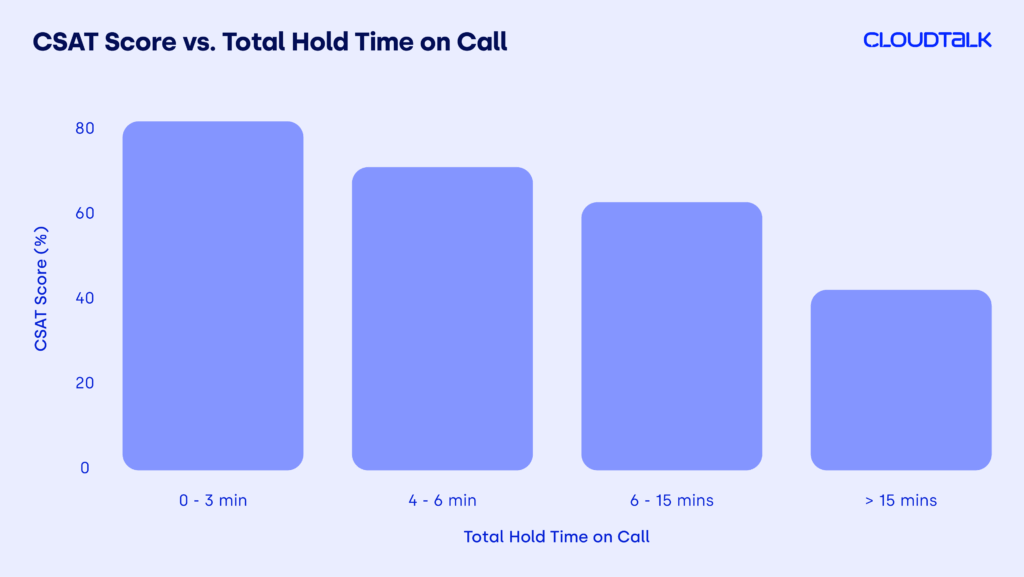
LKN Strategies cut abandonment by 40% and boosted FCR by 20% with CloudTalk. See how!
Industry Examples of Benchmarking
Every industry has unique customer needs and benchmarks. Here are four sectors where call center benchmarking proves incredibly valuable, along with benchmarks to aim for and context-specific best practices:
Healthcare
Complex patient queries and compliance demands make efficiency and accuracy top priorities. Best-in-class healthcare centers aim for:
- FCR: ~71%
- AHT: ~6.6 minutes
- Abandonment: ~7%
Benchmarking in healthcare helps balance empathetic care with operational discipline, making it ideal for teams handling sensitive patient calls.
Finance and Insurance
Both the finance and insurance sectors demand speed, accuracy, and secure handling of complex queries.
- FCR: ~67%–71%
- AHT: 6–7 minutes
- CSAT: 80%+
- Call Transfer Rate (Insurance): ~12%
Benchmarking against industry-standard call center metrics helps these teams reduce escalations, improve resolution accuracy, and maintain trust while staying within strict regulatory limits.
Retail
Retail’s transactional nature enables high-resolution rates and speedy service:
- FCR: ~78%
- ASA: <30 seconds
Meeting benchmarks for quick resolutions and digital experience helps retail call centers manage high volume and support omnichannel expectations.
Pro Tip
Pro Tip: Use call center industry benchmarks and contact center industry standards to tailor your strategy to your sector’s service demands and competitive edge.
Benchmark smarter, hit your KPIs faster, and turn every missed target into measurable wins.
The 5 Expert Steps To Start Tracking Your Metrics
Benchmarking can seem overwhelming at first, but getting started is straightforward. Follow these five expert-backed steps to build a performance-driven call center strategy.
1. Define Key Performance Indicators (KPIs)
Start by identifying which call center KPIs matter most to your business. The most common KPIs in call centers are average handling time (AHT), first call resolution (FCR), CSAT, and service level.
Your KPIs should reflect your goals, align with broader business objectives, and be specific enough to guide action.
2. Choose the Right Tools for the Job
Use call center monitoring software that supports real-time reporting, flexible dashboards, and CRM integration.
The right call center features make it easier to track call center metrics, industry standards, and uncover optimization opportunities.
3. Establish Baseline Metrics
Before targeting improvements, collect and review current data to establish your baseline. These numbers become your reference point for evaluating future success.
Historical performance and trend analysis help ensure your benchmarks are realistic and grounded.
4. Set Target Goals and Benchmarks
Use a mix of call center benchmarks, internal data, and strategic goals to define where your team should aim.
Set goals that are measurable and time-bound, and revisit them regularly as your team or market conditions evolve. This is one of the best ways to optimize your pipeline.
5. Implement Ongoing Monitoring and Analysis
Tracking doesn’t stop at setup. Continuously monitor quality of service and performance, generate reports, and involve stakeholders in reviewing progress.Using Analytics consistently helps surface contact center benchmark data worth improving and turns raw data into action plans for growth.
The 4 Key Call Center Tools To Boost Benchmarking
There’s no reason to rely on manual tracking anymore. Modern call center software gives you built-in tools to streamline processes, monitor KPIs, and improve overall performance.
Here are four essential call center features that can upgrade your call center benchmarking efforts.
#1 Call Center Analytics
Overview:
Call Center Analytics centralizes all call activity, agent performance data, and contact center metrics. This helps you uncover trends, performance gaps, and coaching opportunities. It also lets you dive deeper into every call, both inbound and outbound, to make smarter operational decisions.
Best for:
Inbound & Outbound Operations
#2 Analytics Dashboard
Overview:
Analytics Dashboard helps you visualize real-time activity across your team, from live call stats to agent availability. Analytics dashboards simplify call center performance tracking, allow quick bottleneck detection, and support fast, data-driven actions.
Best for:
Inbound & Outbound Operations
#3 Call Monitoring
Overview:
Call Monitoring gives your managers the tools to join, listen to, or coach during live calls. Employ it to improve the quality control, onboarding, and script effectiveness, without interrupting the customer experience.
Best for:
Inbound & Outbound Operations
#4 Wallboard
Overview:
Wallboards drive engagement by displaying real-time stats—like call center benchmarks, agent performance, or queue length—directly on team dashboards or screens. This boosts visibility, competition, and motivation.
Best for:
Inbound & Outbound Operations
Future-Proof Your Call Center With Smarter Benchmarking
Call center benchmarking is no longer just a performance check; it’s your engine for continuous growth.
With AI-driven analytics, automated reporting, and tools that flag gaps before they hurt revenue, your team can go from reactive to relentlessly proactive.
You’re not just tracking calls anymore, you’re predicting outcomes, refining CX, and aligning every metric to real business results.
The future belongs to those who act on their data. And that future starts now.
Deliver standout CX, fix blind spots fast, and future-proof your call center before customers churn.
Sources:







